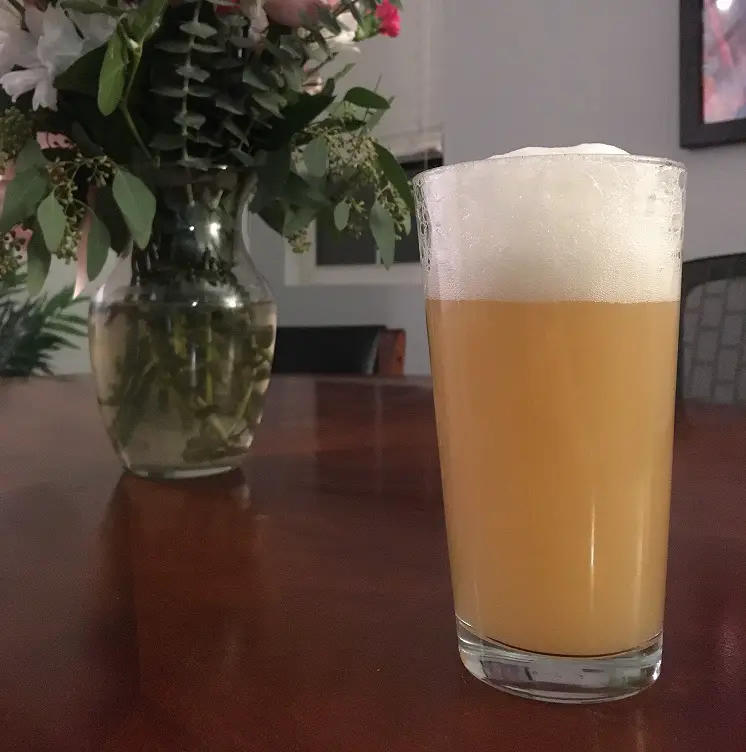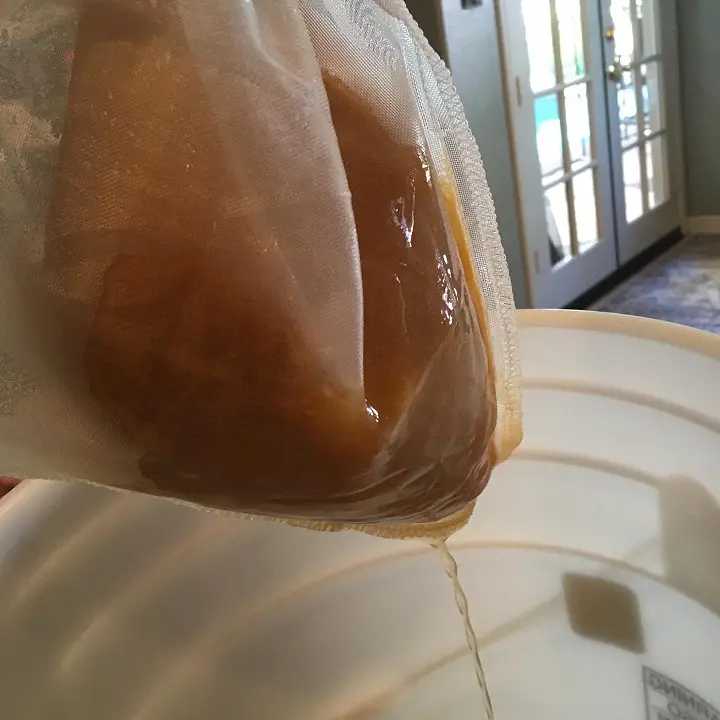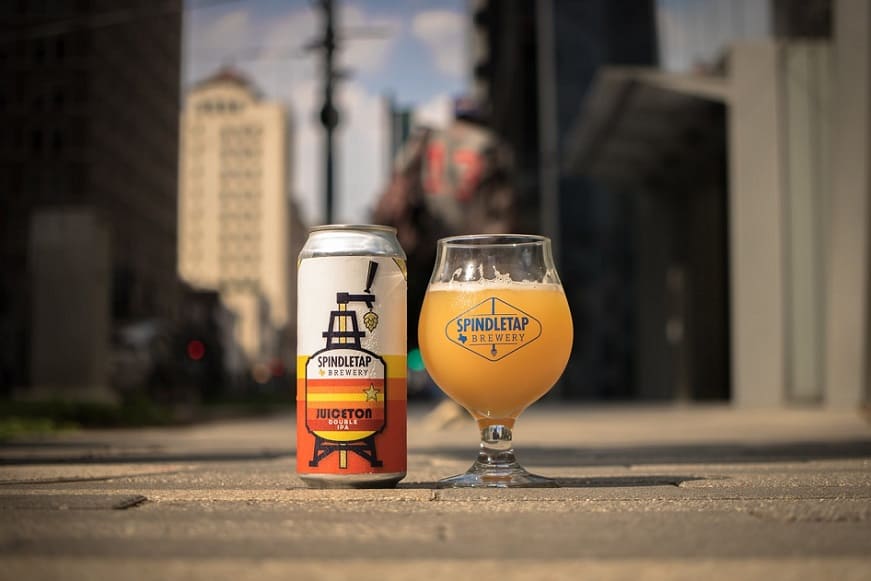
Recently I’ve been giving a lot of thought about filtering my beer. I want a nice clear beer without all the yeast and other heavy particles that cloud up the beer. I typically bottle all of my beers straight from the carboy so filtering is not something that I have the luxury of doing and here is why.
If you filter your beer before bottling you will end up with an uncarbonated beer. This is because remaining yeast needs to eat your priming sugar in order to create CO2 that leads to a carbonated beverage. If you decide to bottle directly from a keg then filtering is possible.
Although filtering beer is a great way to get great clear beer with less time it is more expensive and could alter the flavor of your beer. It is also very difficult to filter your beer directly from a carboy, so you will need to keg your beer and force carbonate it before filtering can become a viable option.
Bottling Your Beer Directly From the Carboy
When we talk about filtering beer, its typically because we want to get a fine and clear beer and sometimes we even want to get the yeast sediment out of the bottle. The problem is if we have not force carbonated a beer then we cannot bottle a beer without yeast still readily available.
Therefore it is impossible to filter a beer before we bottle it, but there are many ways to get a beer that is clearer without the use of a very fine filter.
- Filter out larger chunks with a muslin bag prior to bottling.
- Use rice hulls to keep larger particles out of the boil and finished product.
- Cold crash the beer 24 hours before bottling.
- Lager the beer for a few months before bottling.
- Don’t shake up the sediment prior to bottling.
- Use cold side and hot side fining agents. For example Irish moss or carrageenan.
Some great fining agents I’ve used and found online are: Whirlfloc tablets and five star super moss.
So as you can see even though we cannot filter a beer before bottling there are still many methods of keeping a beer on the clear end of the spectrum without destroying the yeast that will ultimately carbonate the bottled beer.
Letting Sediment Settle on the Bottom
If left in a dark temperature closet over time a beer will separate from its heavier particles. Yeast will also die or go into hibernation clearing up the beer. The process can also be aided by cold crashing once the beer is fully fermented.
In order to cold crash a beer you will need to bring the temperature down to 35 to 40F. This will forcibly put the yeast into hibernation and drop it to the bottom of the fermentation vessel. This is typically done for 24 hours with ale yeasts.
Ultimately, using cold temperatures will not kill yeast, but put it into hibernation. This will lead to more of the yeast falling to the bottom of the carboy and will leave less yeast in the bottle for carbonation. This could ultimately end up leading to less yeast and sediment at the bottom of the bottle when enjoying a homebrew.
Cold crashing or laagering for a few months will also allow more proteins and other particulates to clump together and fall to the bottom of the carboy. If left undisturbed when bottling this will lead to a more crystal clear beer.
Understanding Forced Filtration with Kegs
Kegging a beer has many benefits. Along with taking a lot less time to carbonate and not having to bottle you can also filter to your hearts content. This is because once the beer has finished the yeast is no longer needed. This means that you can can filter without worry. Of course its very important to choose the right beer filtration system. You don’t want to end up with mountain spring water again after all. Then you would be back to square one!
In order to understand how to filter beer you first need to understand microns.
A micron is how filters are measured. 1 micron is smaller than 5 microns. neither are visible to the naked eye. Typically beer will need to be filtered somewhere between 1 and 5 microns.
It is important to understand that filtering beer could result in loss of character in both taste and presentation. There are many beers that are not supposed to be filtered. The lower the microns that you use the less beer you are likely to have since your yield will be smaller with less volume being taken up by dissolved solids.
My Filtration Methods Prior to Bottling

I typically use a muslin bag to filter before bottling. It is likely 200 microns so it won’t really filter the beer the way a lager should be but it will get any hop chucks or fruit chunks from getting into the beer.
It is far to large to stop yeast from being left behind. Muslin bags should not affect the flavor of your beer in any way.
Homebrew Filtration between two Kegs
Mechanical filtration for homebrewers is typically done between two kegs with the filter and lines being connected. There are two methods of filtration one being slightly more expensive than the other.
- Plate Filtration System: Typically used by commercial breweries. This system has a higher upfront cost but is better at filtering than a canister filtration system and costs less over time.
- Canister Filtration System: like many water filter systems. Cheaper upfront cost but filter replacements are more costly than plate filters, so over time plate filters are less expensive.
Make sure you pay attention to the reviews on the actual filters that come with the filtration system. I would make sure they are of extremely good quality. After all you are filtering your precious beer through it, so you will want it clean and high quality.
Overall homebrew filtration can lead to some beautifully clear beer that has a crisp clean taste. But it can be daunting and unnecessary for beginning homebrewers. There are also many beers that are known for their unfiltered nature.
Certain Beer Styles Should Be Left Unfiltered
When it comes to brewing beer you don’t have to worry about filtering all styles of beer. Some beer is purposely left hazy, think the extremely popular hazy IPA that is all the rage in 2021. These types of beers do come with some shelf stability issues so its important to drink them quickly and not save them long term.

- Hazy IPA or New England IPA (NIEPA): This is a hoppy beer that is also very fruit forward. Its haze comes from added fruit purees and sometimes type of yeast used.
- Kellerbier: A German style beer meaning cellar beer. It was typically open fermented which allowed CO2 to escape but was sealed right before the yeast had completed its fermentation. All yeast and nutrients are left in the beer when it is served.
- Milkshake IPA: This is a new addition to the beer world. This style of beer unapologetically steals from the stout style and is an incredibly sweet version of an IPA because it ads lactose. It also utilizes oats to achieve a cloudier appearance because of the proteins present in oats.
- Hefeweizen: This is my favorite beer style and is left unfiltered when bottled. The yeast particles contribute to the cloudiness of the beer. The wheat proteins also lead to a heavier and foggy beer. Its like drinking liquid bread and can fill you up quick.
- Belgian Tripel: The Tripel style of beer is known for its bottle conditioning. This means that yeast must be present at time of bottling to produce a nice head of foam. If it were to be filtered the yeast could not bottle condition this beer.
This is the golden age of unfiltered beer and there even seem to be some health benefits to leaving a lot of beers unfiltered. Unless your trying to brew up a clear style with a lighter mouthfeel and easier drinking then filtering may not be necessary.
It really depends on the style of beer that you are brewing. So before you think about buying a filter think about your favorite style of beer and if it needs to be filtered or not.
